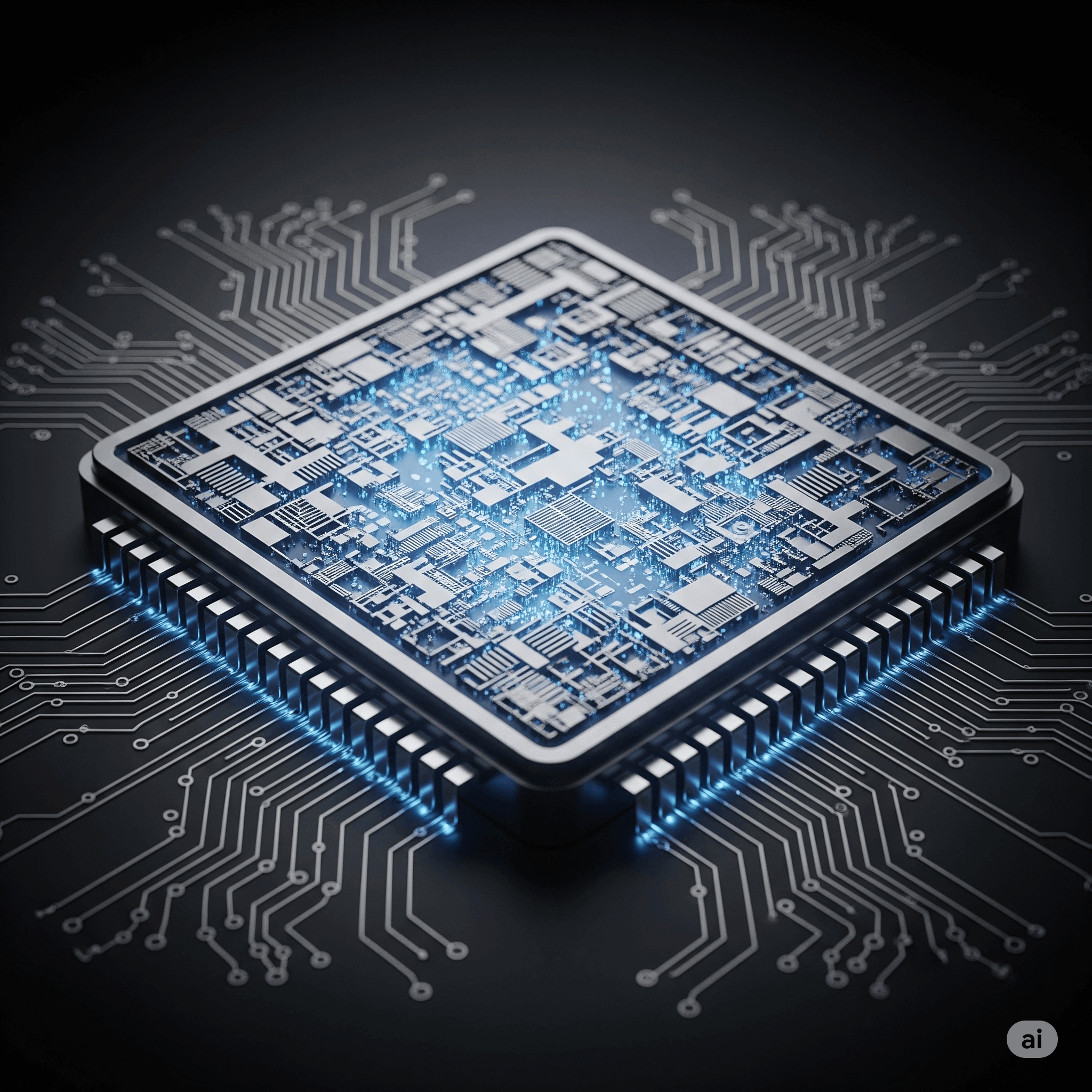The Silicon Revolution: Why Custom AI Chips Are the New Frontier

The AI revolution has, until now, largely been a story of software and algorithms—of massive language models and intricate neural networks. Yet, beneath this celebrated surface, a fundamental transformation is reshaping AI’s very foundation: the hardware it relies on.
The era of general-purpose processors is giving way to a new age of specialization. Companies are no longer just coding AI; they are forging it in silicon. This is the story of why custom AI chips are rapidly becoming the most important frontier in the race for technological dominance.
From Software to Silicon: The Driving Forces
For years, GPUs (Graphics Processing Units) have been the workhorses of the AI world, their parallel processing capabilities proving highly effective for training deep learning models. But as AI models have grown exponentially in size and complexity, even GPUs are hitting their limits. The demand for more computational power, better energy efficiency, and lower costs has created a perfect storm for a hardware revolution.
This has led tech giants like Google (TPUs), Amazon (Trainium & Inferentia), and Microsoft (Azure Maia) to a radical conclusion: to get the most out of their software, they need to build their own hardware. This vertical integration of the tech stack—designing chips specifically for their own AI workloads—provides a powerful competitive advantage.
The Benefits of Going Custom
Why undertake the massive expense and effort of designing custom silicon? The reasons are compelling:
- Performance and Efficiency: A custom chip, or ASIC (Application-Specific Integrated Circuit), is tailored to do one thing exceptionally well. By co-designing hardware and software, companies can strip away unnecessary functions and optimize the physical layout of the chip for the exact mathematical operations their AI models use. This results in dramatic speedups and significant reductions in energy consumption.
- Cost Reduction at Scale: While the initial investment is high, operating massive data centers with custom chips can be far more economical in the long run. Reduced power consumption and optimized performance translate directly to lower operational costs, a critical factor when training and deploying AI to millions of users.
- Supply Chain Control: Relying on a single or small number of external chip suppliers creates a bottleneck and a strategic vulnerability. By bringing chip design in-house, companies gain control over their own destiny, insulating themselves from market volatility and ensuring a steady supply of the hardware that powers their core business.
Beyond the Hyperscalers: A New Hardware Ecosystem
This trend isn’t limited to the tech titans. A vibrant ecosystem of startups is emerging, each with its own innovative approach to AI hardware:
- Neuromorphic Computing: Companies are building chips that mimic the architecture of the human brain, processing information in a fundamentally different and more efficient way.
- Edge AI: Specialized low-power chips are being designed to run AI directly on your smartphone, car, or smart home devices, enabling real-time intelligence without relying on the cloud.
- Open-Source Hardware: Initiatives like RISC-V are democratizing chip design, allowing smaller companies and researchers to create their own custom processors.
What This Means for Business and Consumers
For the enterprise, the custom silicon revolution means that the AI services and platforms they rely on will become faster, more powerful, and more cost-effective. It also signals a future where specialized hardware could be designed for specific industry needs, from financial modeling to medical imaging.
For consumers, this trend will manifest as more powerful and intelligent devices. Imagine smartphones with on-device AI assistants that are faster and more private, or cars with more reliable and responsive autonomous driving systems. This is all enabled by the move towards specialized, efficient hardware.
The AI race is no longer just about having the best algorithm. It’s about having the best chip to run it on. The silicon revolution is here, and it’s forging the future of intelligence.